
Ryobi 80V Battery Riding Mower: The Truth After 30 Months
Share
After roughly 2½ years and dozens of mowing sessions, here’s an honest, hands‑on update on the Ryobi 80V all‑electric lawn tractor: what’s held up, what hasn’t, the service outcomes, and whether I’d buy this mower again today.
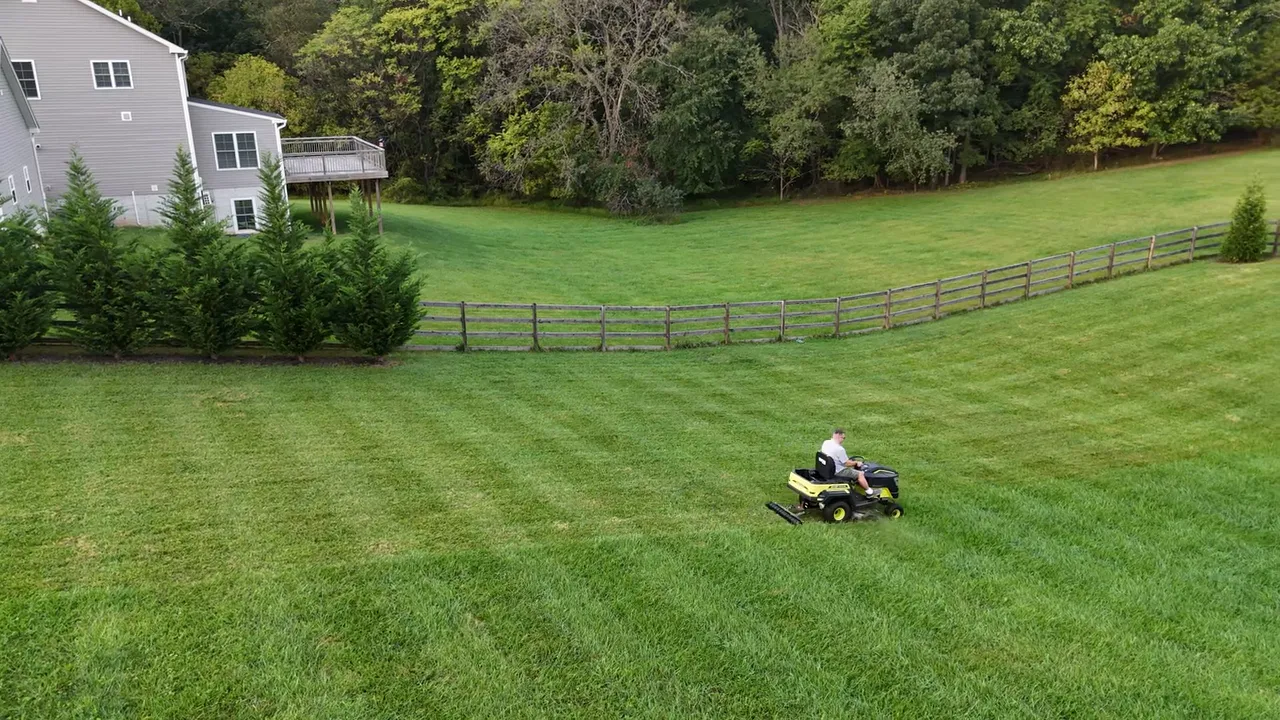
Quick overview — what I use the mower for
I mow about an acre of mixed lawn (not all turf grass). I usually cut between 4 1/4" and 4 1/2" — higher in the hot months to avoid scorching. I also pull implements like a tow‑behind sprayer, aerator, dethatcher, and fertilizer spreader.
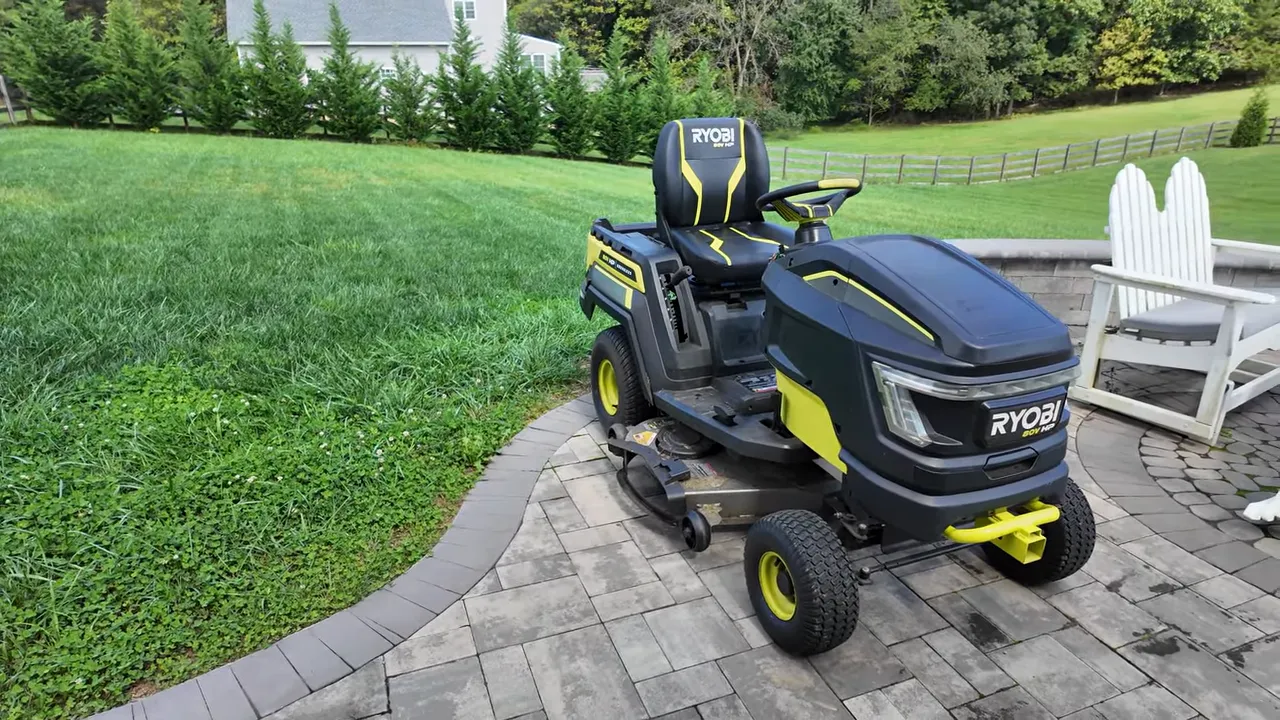
Exterior & daily wear
Overall the tractor has held up reasonably well on the outside. I keep it covered and stored in a shed when not in use, and basic wear (pedals, seat, suspension) looks normal.
- The hood shocks still work and the charge port is fine.
- I removed the deck baffle because it rubbed and kept clippings from dispersing the way I wanted — I saved it if I want to reinstall it later.
- The steering wheel has noticeable wear and is actually loose — I believe a bolt has sheared inside the column. I’ve submitted a service request.
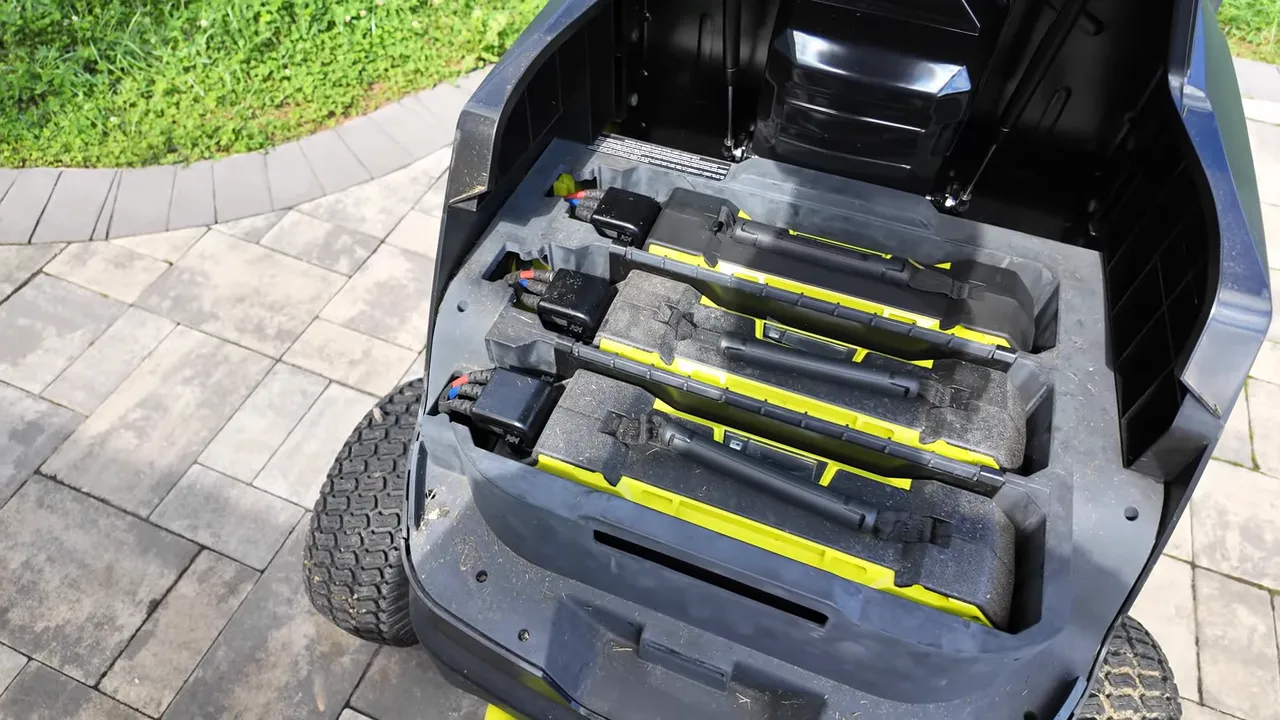
Battery system — one failed, warranty replacement
This mower uses three 80V battery packs (10Ah each). A single bad pack will drop capacity by roughly one third.
- Symptoms I observed: more frequent recharges, one pack showing higher charge than the others, and irregular state‑of‑charge readings (e.g., jumping from 50% to 35%).
- Diagnosis steps: press the state‑of‑charge button on each pack; inspect temperature (one pack got extremely hot); attempted to charge the pack — it refused to accept charge.
- Temporary trick I tried: cooling the pack in a freezer for ~15 minutes would sometimes bring it back online briefly, but that’s not a fix — it indicated internal failure.
- Outcome: Ryobi replaced the bad battery under warranty with no questions asked. After replacement, run time returned to original performance.
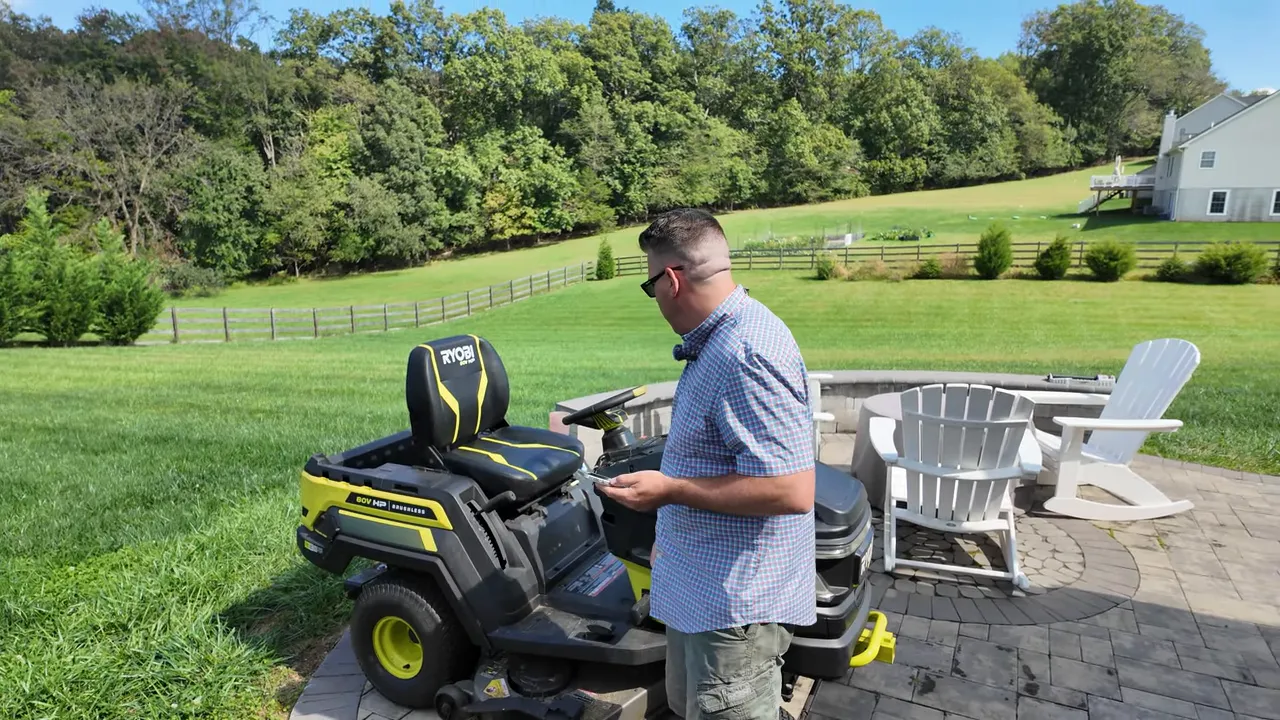
Important cost note: replacement packs are pricey — around $800 each through Ryobi (so three would be roughly $2,400). The mower does come with a five‑year battery warranty, but after that the cost of replacement is a major factor to consider.
Runtime & real world use
Except during the period with the bad battery, runtime has been consistent for me. This tractor will mow my ~1 acre yard, but I typically need to plug in to recharge once during the job. Pulling heavy implements reduces runtime and introduces another problem (see below).
Service & electronics issues
- The drive controller overheated early on and was replaced — it hasn’t required full replacement again, but overheating still occurs when pulling implements and can shut the unit down until it cools for 10–15 minutes.
- The LCD screen failed and was replaced. After that repair, Bluetooth connectivity to the app was lost; Ryobi service fixed whatever was needed so the app connects again (handy for monitoring charge sessions remotely).
- Steering wheel detachment is pending service.

Cut quality — the biggest disappointment
This is the main reason I likely wouldn’t buy this specific mower again.
- On smooth turf the cut is probably acceptable, but my lawn is mixed and includes rough patches and weeds. I regularly see uncut blades left behind — even on medium blade speed and slow passes.
- Lowering the deck improved results slightly, but I bought this tractor specifically to comfortably cut higher (4"+) through hot, unirrigated months. The mower struggles to provide a clean cut at the higher deck heights (4-4.5").
- The discharge clippings are fairly large; the deck doesn’t mulch as finely as I would like. That means more thatch buildup versus my previous mower.
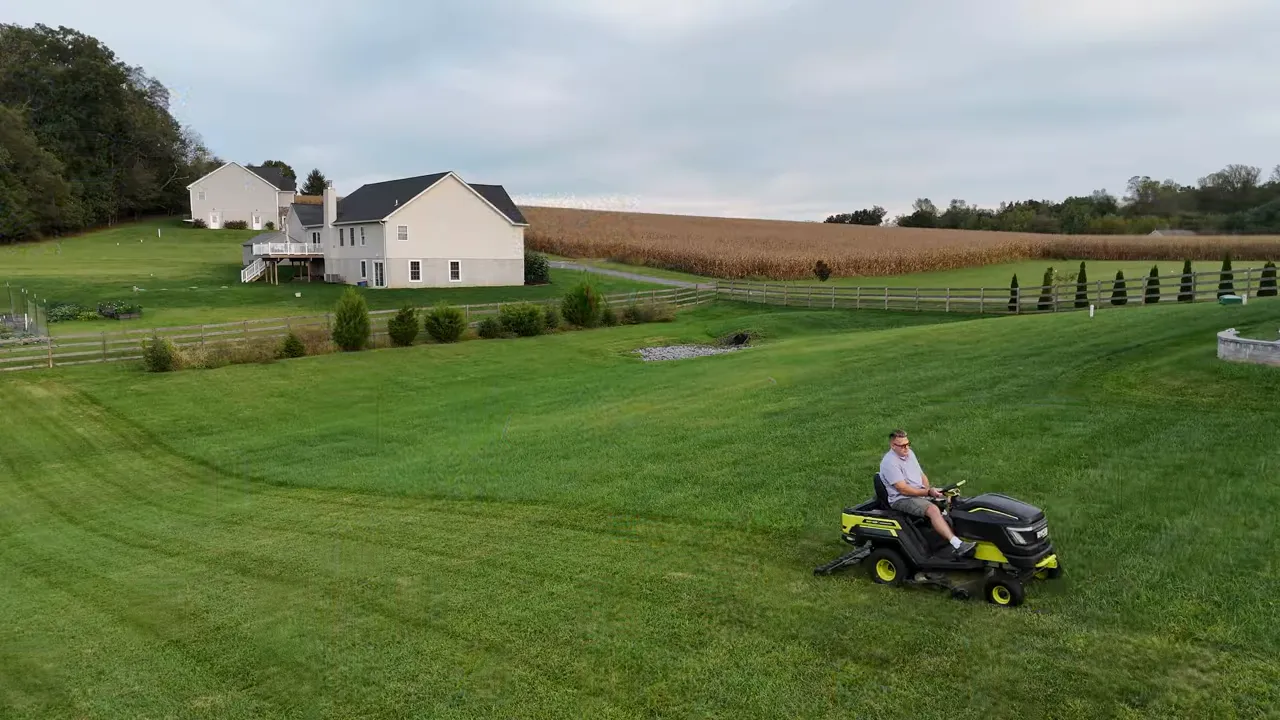
Deck clogs and maintenance
The deck clogs easily in tall or damp grass. Practical maintenance notes:
- Remove and clean the deck frequently — more often than the recommended 25‑hour blade check, especially after wet cuts.
- I sharpened blades in year two and replaced all blades this past season (~$80 at a big‑box store).
- Under‑deck coatings (like MO Deck Spray or other nonstick sprays) can help reduce clumping and make cleanup easier.
Controls & safety: accelerator behavior
The accelerator pedal is quite sensitive. That sensitivity can cause jerky speed changes, which is especially risky on slopes or when maneuvering. If you press hard going uphill then suddenly it surges or jerks, you can lose control — not acceptable for a mower I use on variable terrain.
Pulling implements — an important caveat
One of the main reasons I chose a tractor (rather than a zero‑turn) was to pull implements. But:
- When pulling heavy implements (plug aerator, dethatcher, etc.), the drive controller overheats, the mower beeps, and the drive motor may shut down until it cools for 10–15 minutes.
- That makes spring and fall tasks take much longer and is a major frustration.
Pros and cons — at a glance
Pros
- All‑electric drivetrain: quiet, no gas, low vibration.
- Reasonable runtime for a ~1 acre yard with one mid‑job recharge (when batteries are healthy).
- Service responses from Ryobi fixed several issues under warranty (battery, screen, parts).
- Deck removal and blade replacement are straightforward mechanically (weight is the only challenge).
Cons
- Poorer cut quality on rough or weedy lawns at higher deck heights.
- Deck clogs easily in tall/damp grass; clippings are large and contribute to thatch.
- Accelerator pedal is sensitive and can cause jerky/unsafe behavior on slopes.
- Drive controller overheating when pulling heavy implements.
- Steering wheel wear/looseness.
- Battery replacement cost is high (~$800 per 10Ah 80V pack).
Would I buy it again?
Short answer: probably not this Ryobi tractor. I would first test competitors — particularly Ego — because my experience with Ego push mowers, blowers, and multi‑tools suggests higher overall build and cut quality. If I were buying again today, I’d test an Ego riding mower (if available) or consider other brands before committing to this Ryobi model.
If you have a small, flat, well‑kept lawn and mostly want a quieter, electric ride without towing heavy implements, this Ryobi could be a cost‑effective option. But for mixed terrain, heavy implement use, or higher deck cut quality, look elsewhere.

Practical tips if you already own one
- Monitor each battery’s state‑of‑charge regularly and learn the signs of a failing pack (excess heat, refusal to charge, inconsistent SOC readings).
- Keep the deck clean — remove it after high or damp cuts and inspect often.
- Consider under‑deck nonstick spray to reduce clogging and thatch buildup.
- Be cautious towing heavy implements; plan for breaks in work in case the drive controller overheats.
- File service requests early for steering or electronics issues so they’re documented and covered if under warranty.
Final thoughts
The Ryobi 80V riding mower shows the promise of electric tractors: quiet operation, decent runtime, and low‑maintenance electric drive. But in my two and a half years of real use, mechanical and cut‑quality shortcomings — plus expensive battery replacements (after the warranty expires) and overheating while towing — make me lean toward evaluating competitors before buying again.
Have you owned or considered this Ryobi model? Share your experience, tips, or questions — I’d love to hear what worked (or didn’t) for you.

If this helped you, please considering buying me a coffee. Did I get something wrong? Let me know in the comments section or visit our Link Tree to contact us
